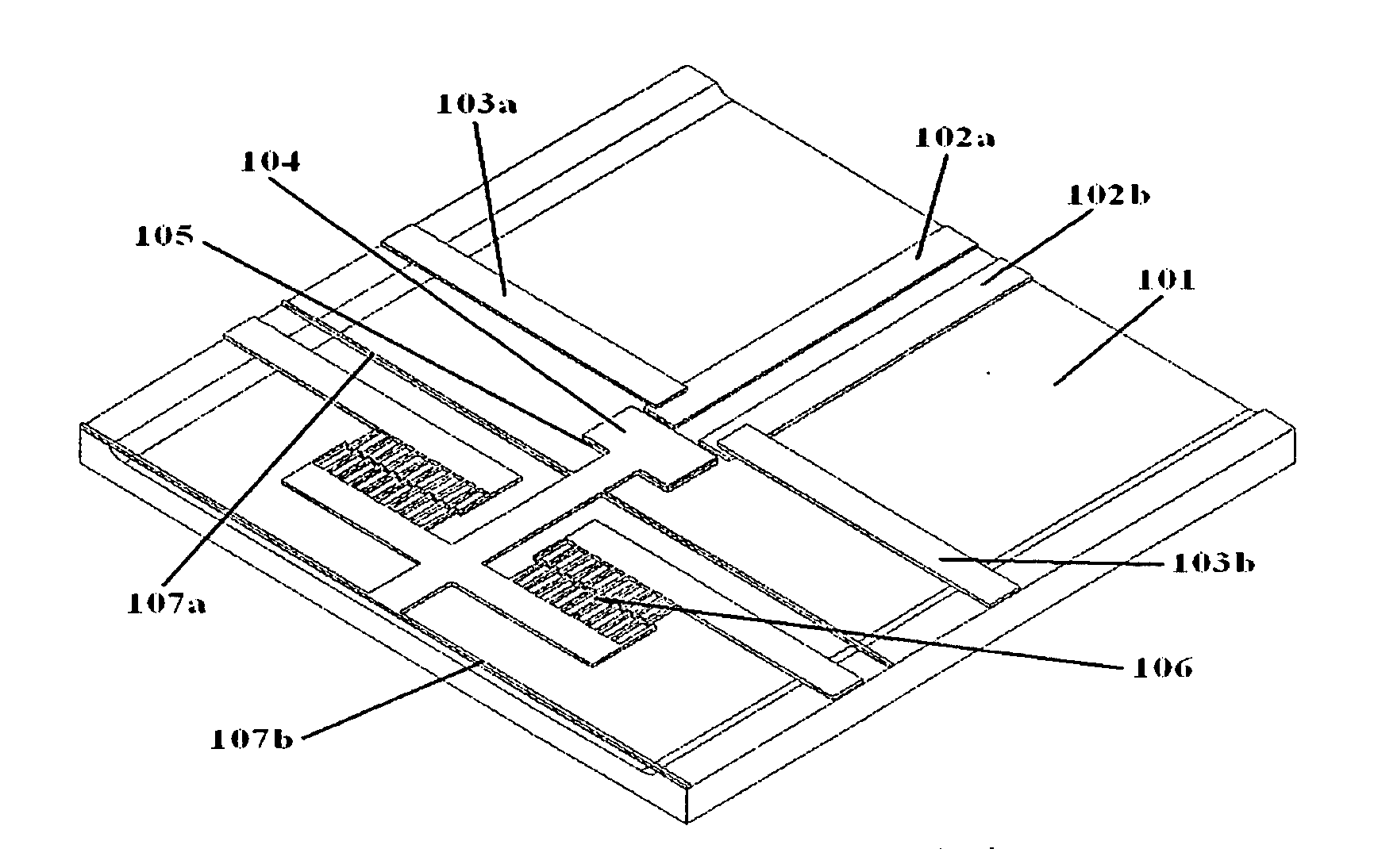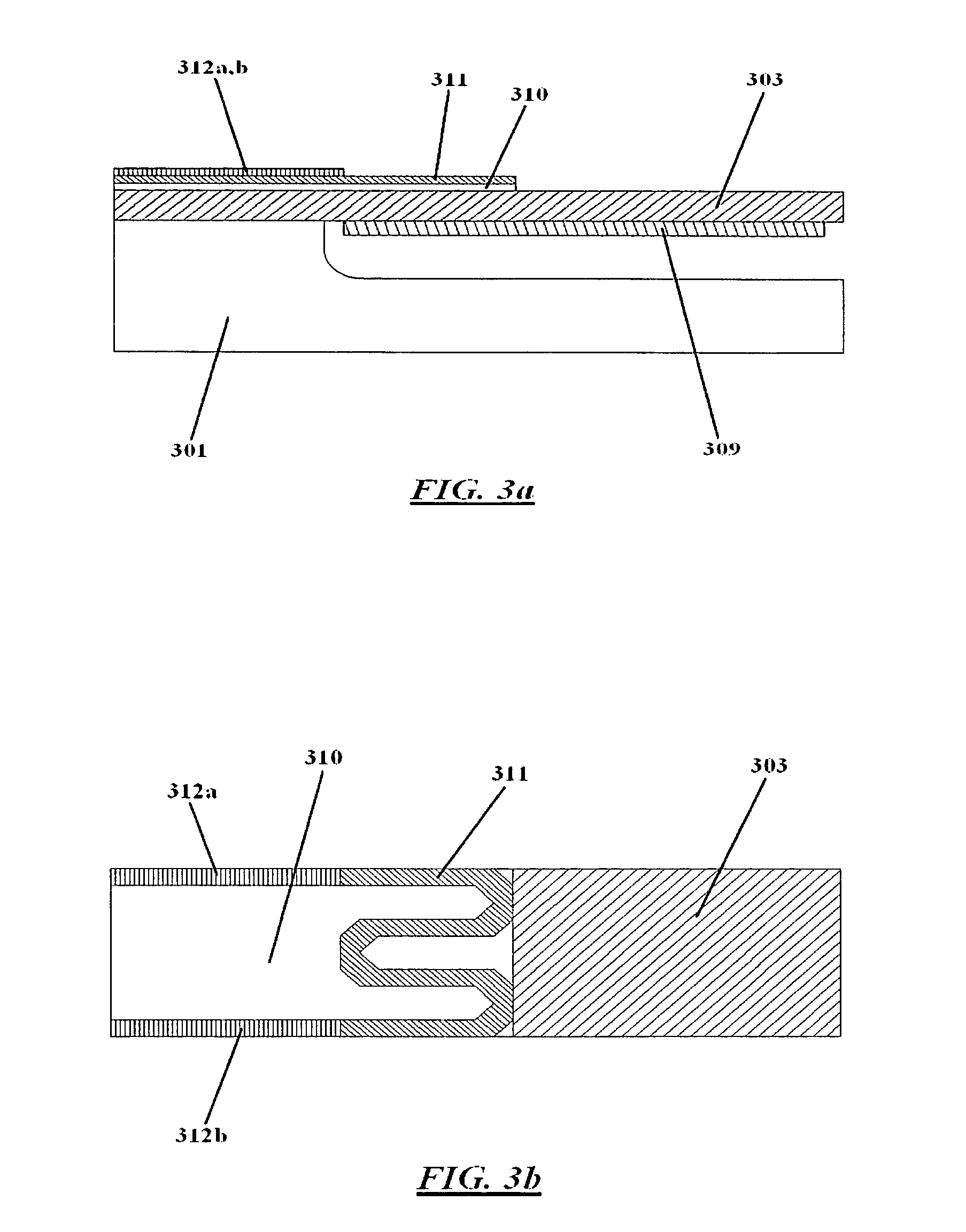Micro-electromechanical relay and related methods
- Summary
- Abstract
- Description
- Claims
- Application Information
AI Technical Summary
Benefits of technology
Problems solved by technology
Method used
Image
Examples
Embodiment Construction
[0026] The present invention can be described in more detail with reference to the accompanying figures in which two preferred embodiments of the invention are shown and two methods of fabrication are illustrated. It should be understood, however, that there is no intent to limit the invention to the particular embodiments and methods disclosed, but on the contrary, the invention is to cover all modifications, equivalents, and alternatives falling within the scope of the invention as defined by the claims.
[0027]FIG. 1 is a diagrammatic isometric view of a micro-electromechanical relay in accordance with one embodiment of the present invention. The relay comprises a base substrate 101, fixed conductors 102a, 102b disposed onto the base substrate, cantilever beams 103 attached to the base substrate at their fixed ends and suspended over the fixed conductors at their free ends, and a movable shuttle structure 104 attached to a shuttle actuator 106. The fixed part of the shuttle actuat...
PUM
| Property | Measurement | Unit |
|---|---|---|
| Temperature | aaaaa | aaaaa |
| Thickness | aaaaa | aaaaa |
| Size | aaaaa | aaaaa |
Abstract
Description
Claims
Application Information
 Login to View More
Login to View More - R&D
- Intellectual Property
- Life Sciences
- Materials
- Tech Scout
- Unparalleled Data Quality
- Higher Quality Content
- 60% Fewer Hallucinations
Browse by: Latest US Patents, China's latest patents, Technical Efficacy Thesaurus, Application Domain, Technology Topic, Popular Technical Reports.
© 2025 PatSnap. All rights reserved.Legal|Privacy policy|Modern Slavery Act Transparency Statement|Sitemap|About US| Contact US: help@patsnap.com



